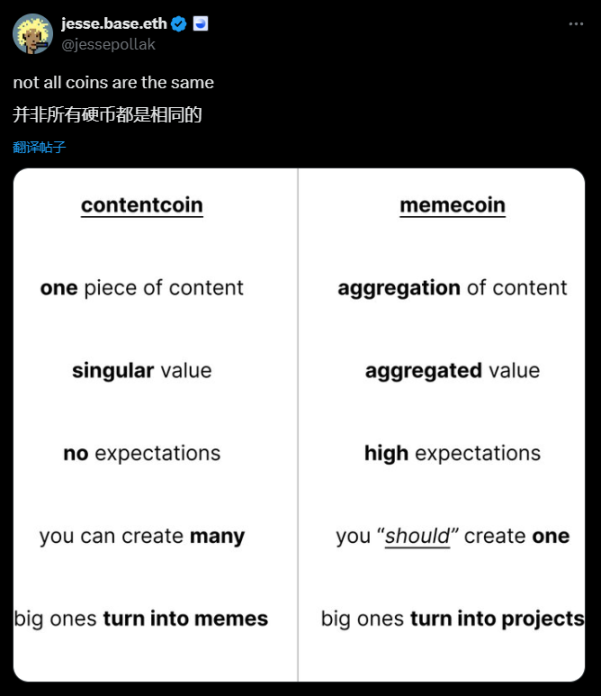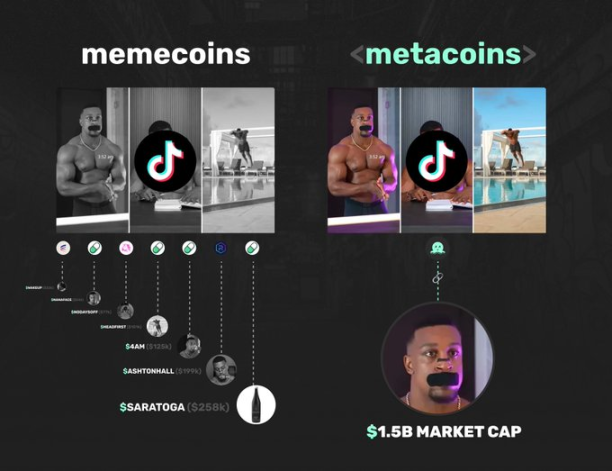Tokenizing any link on the internet.
Written by: Pzai, Foresight News
Recently, Jesse, the head of the Base protocol, has been frequently promoting "content tokens" on Twitter. As early as February 24, Zora had already enabled each post on its platform to become a token. On Zora, the official Base account has released three content tokens, with a market cap reaching up to $20 million, and a series of operations has sparked market enthusiasm.
From ChillGuy to Base, the rise of content tokens not only reshapes the interaction model between creators and fans but also opens up imaginative possibilities for the future of information tokenization. Despite the numerous successful cases of content tokens, there remains a market gap in how to systematically tokenize the vast array of information on the internet—such as a blog post, a short video, or even a tweet. Existing solutions are limited to specific platforms (like Zora's NFT ecosystem) and struggle to cover the diverse content forms of the internet. Therefore, Upside.fun aims to tokenize any link on the internet through the Metacoin vehicle, even creating a scalable "information economy."
Integration of Content Tokens
On Twitter, Jesse differentiated "content tokens" from MEME tokens. Content tokens more represent the value of a single piece of content, and users' expectations are relatively lower. Individuals can create many tokens for a single piece of content, and some widely circulated content can become MEMEs, which will correspondingly increase in market value. MEME tokens can serve as an "integrative" form of a series of content, gaining attention aggregation while achieving higher expectations; some large MEME tokens can even transform into projects or ecosystems (e.g., BONK, DEGEN, etc.). Currently, fragmented content leads to a dispersion of attention in discussions and funding, and "many hands make light work" seems to have evolved into a scattered effort.

Upside.fun approaches this by integrating scattered "content" into MEME clusters represented by "metacoins." Under the existing issuance model, every new internet trend spawns dozens of MEME coins. This creates a split in liquidity, attention, and growth potential. However, within the Upside.fun framework, through the binding mechanism of links and tokens, every internet link (such as TikTok, Twitter, etc.) can become part of this MEME, and the popularity of the tokens positively influences the spread itself, creating a virtuous cycle. This design not only integrates MEME liquidity but also brings the possibility of profiting from early internet trends, allowing it to become the "hot search list" of the entire internet.

As a result, after the project was announced, Upside.fun attracted attention from many crypto users and VCs, including Arthur Hayes and Tangent, during the Waitlist phase, and was retweeted by David Tso, the head of the Base ecosystem. As a public chain that has produced creator economy applications like Friend.tech and Farcaster, Upside's model can concentrate attention on Base and generate considerable capital inflow. Users can now DM its interns to gain Waitlist opportunities.

In the introduction by founder Zachary Dash, Upside.fun is described as an application for trading truth, viral dissemination, and relevance. By allowing crowds to set the price of attention and hotspots, it truly returns the value of the internet to users. "It's like Google, but instead of searching, users buy to own a part of the internet." After combining the concept of content tokens with a broader content audience, can Upside.fun expand the idea of "content tokens" and replicate the glory of Clancker from back in the day? We can remain hopeful.
免责声明:本文章仅代表作者个人观点,不代表本平台的立场和观点。本文章仅供信息分享,不构成对任何人的任何投资建议。用户与作者之间的任何争议,与本平台无关。如网页中刊载的文章或图片涉及侵权,请提供相关的权利证明和身份证明发送邮件到support@aicoin.com,本平台相关工作人员将会进行核查。




